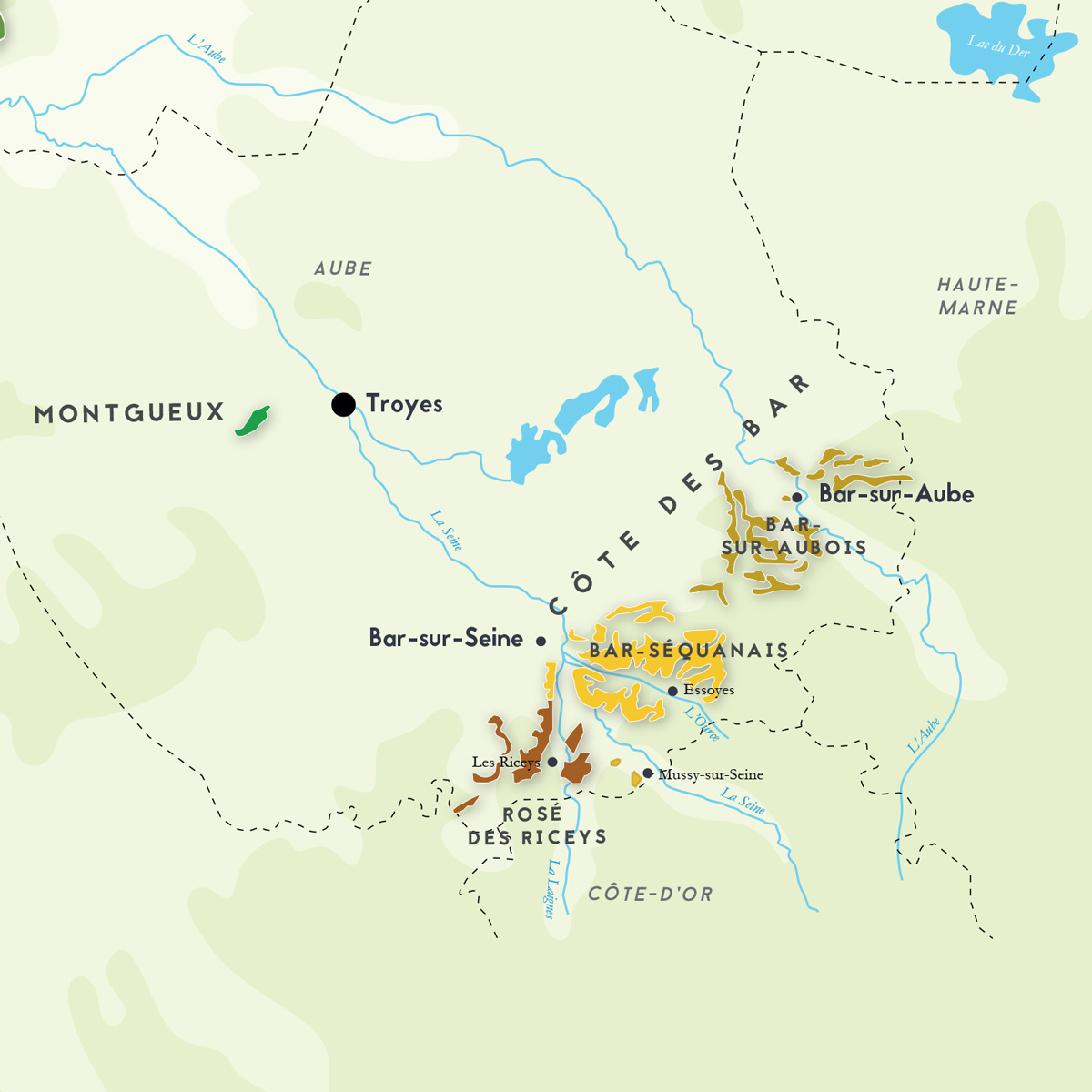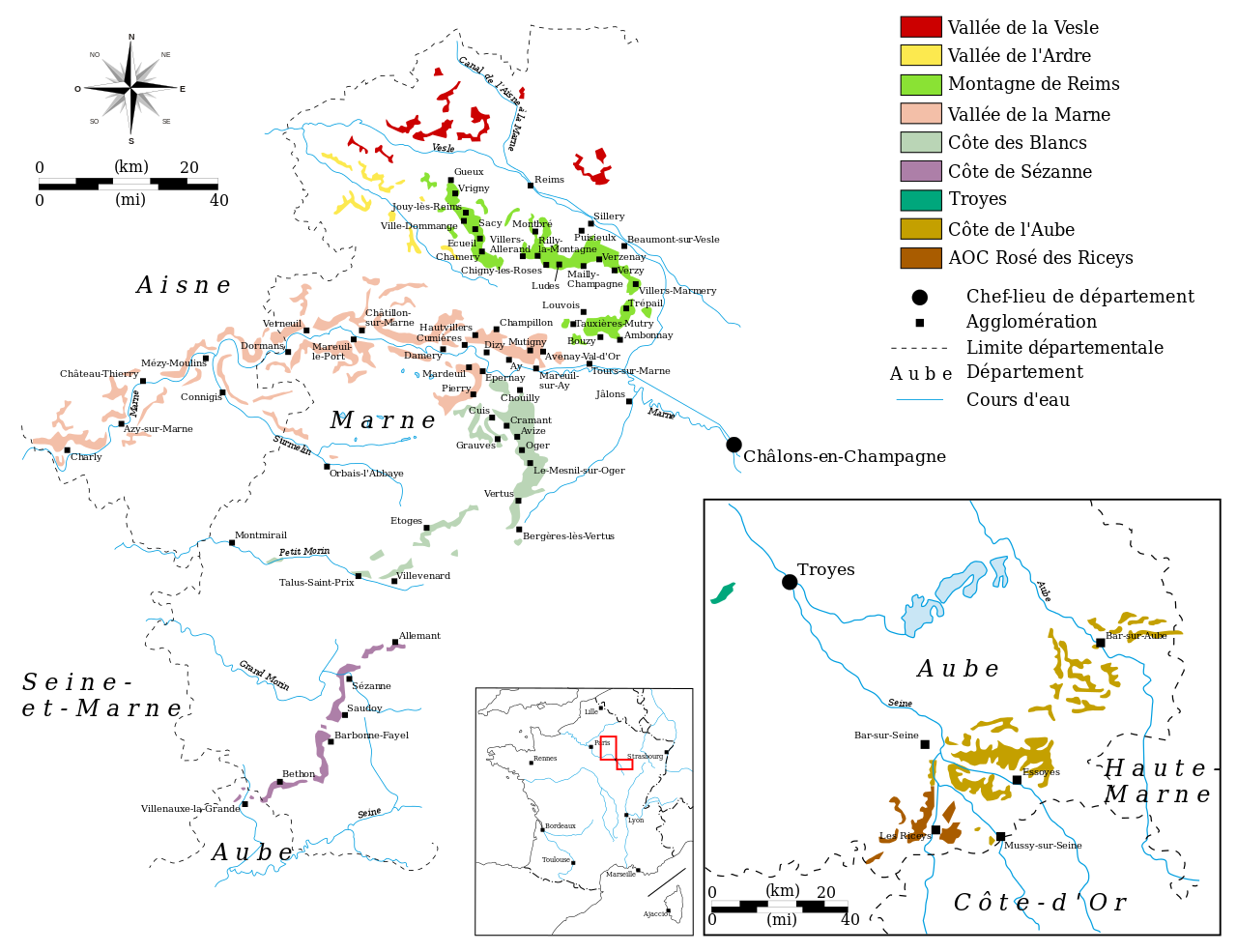C h a m p a g n e
Champagne
G R A N D T O U R
Antonio Moretti Cuseri is also passionate about bubbly, especially Champagne, and has given into the temptation to diversify beyond the Alps into France.
But instead of following in the footsteps of others who have created businesses in Italy for producing quality sparkling wines that compete with Champagne, he couldn’t resist the draw of the Aube terroir, preferring to make an actual Champagne in the Champagne region, collaborating with a small maison champenoise. After years of research, he found a partner in the Côte des Bar, the southernmost part of the Champagne-producing region – a family-run RM (recoltant manipulant) business around since 1876. An authentic agricultural business, it harvests, vinifies, and produces its own Champagne directly, based on grapes exclusively from its own vineyards, which it vinifies in its own cellars.

Grand Tour
Produit de France
Moretti Cuseri has chosen his wines based on different vintages and has created his own cuvee known as the “Grand Tour”: a quality product attained from a careful blend of two grapes typical of the area – Chardonnay, but especially Pinot Noir.
This area is unique, has well-defined borders, and inspires intense emotions. It includes 63 towns, with 8,000 hectares of vineyards (a little bit less than one-quarter of the total vineyards in Champagne). The vineyards of Aube, which are mainly planted with Pinot Noir (about 80%), are located in hilly areas, with slopes of up to 15%, alongside narrow valleys and with hilltops blanketed in forests. The soil is Kimmeridgian, which is very similar to that of Chablis, and the subsoil goes back to the Jurrasic era (146-151 million years ago), made up of limestone and marl.

terroir
C ô t e d e s B a r
The terroir of Côte des Bar, one of the identifying traits of the brand, benefits from a special environment, with a temperate, oceanic, semi-continental climate, in which exposure to the sun is limited, and the chalky subsoil serves to regulate the temperature and protect the roots of the vines. This unique microclimate and the exceptional mineral composition of the soil help create wines that are decisive and clean.

Grand Tour
Grand Cuvée Réserve
Our Grand Tour perfectly represents the typical make-up of the vineyards of this area: 80% Pinot Noir and 20% Chardonnay.
Our Champagne boasts a crystalline yellow hue, with a fine, creamy, and persistent perlage. It is intense and complex on the nose, with a variety of aromas, such as candied fruit, yeast, and bread crust. The palate is rich, elegant, tight and shows a nice length. The finish is so harmonious, the sip becomes almost everlasting. The dosage (9g/l) makes it soft, structured, and suited to the entire meal. This Champagne brings together balance and fullness, complexity and pleasantness.
Grand Tour
Nature
This cuvée was created for those who prefer a fresher, smoother Champagne.
It is a typical blend from this area: 85% Pinot Noir and 15% Chardonnay, but with a dosage of 2.9g/l, highlighting the terroir and identity of the vineyards.
On the nose, Brut Nature is complex, with heightened aromas of fresh fruit like yellow plum and subtle notes of toasted almonds and citrus peel.
Its profile shows lively acidity, good linearity, and vivacity on the palate.
Clean, vertical, and pure, it is perfectly suited to aperitifs and pairings with raw fish and seafood.



